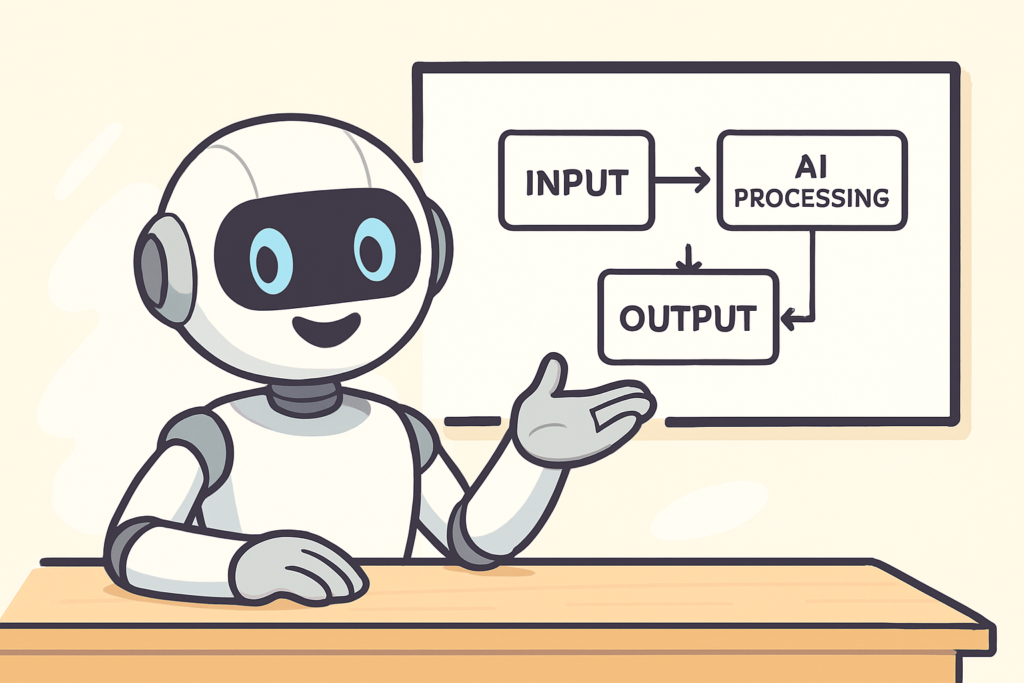Beyond the Hype: Setting Realistic Expectations for AI in Your Business
Artificial Intelligence is powerful, but it’s also surrounded by immense hype. Seeing headlines about AI achieving superhuman feats can set unrealistic expectations for the tools readily available to small businesses. Let’s ground ourselves in reality.
What AI Can Realistically Do for Most SMBs Today:
- Automate Repetitive Tasks: Handle predictable, rule-based, or data-driven tasks much faster than humans (e.g., drafting standard emails, summarizing text, generating basic reports, answering FAQs).
- Augment Human Capabilities: Act as a helpful assistant to speed up processes, brainstorm ideas, or provide information (like helping with market research or social media ideas).
- Improve Efficiency: Streamline workflows and free up human time for higher-value activities (overcoming writer’s block, faster newsletter prep).
- Provide Accessible Tools: Offer capabilities previously requiring specialized software or skills (e.g., basic image generation, simple copywriting assistance).
What AI Struggles With or Cannot Do (Especially Current Accessible Tools):
- True Understanding & Consciousness: AI doesn’t “understand” concepts in the human sense; it processes patterns in data. It lacks consciousness, feelings, or genuine creativity.
- Complex Strategic Thinking: Setting long-term business strategy, making nuanced judgments based on incomplete information, or navigating highly complex, novel problems.
- Deep Empathy & Human Connection: Building genuine rapport, understanding subtle emotional cues, providing truly empathetic customer service.
- Guaranteed Accuracy (Hallucinations): AI models can confidently generate incorrect or fabricated information (“hallucinate”). Fact-checking is always necessary.
- Common Sense Reasoning: Applying basic real-world knowledge or adapting flexibly to situations significantly outside its training data.
- Handling Ambiguity Perfectly: Interpreting vague instructions or resolving contradictory information reliably. (Good prompting helps but doesn’t eliminate this).
- Replace the Business Owner’s Vision: AI cannot replicate your unique passion, vision, and leadership for your business.
Setting Yourself Up for Success:
- Start with Specific Problems: Don’t look for “an AI solution.” Identify a specific bottleneck or time-consuming task in your business, then see if an accessible AI tool can help (as per our starting guide).
- View AI as an Assistant, Not a Replacement: Think of it as hiring a very fast, knowledgeable, but sometimes literal-minded intern. It needs clear instructions and oversight.
- Focus on Augmentation: How can AI help you do your job better, faster, or more easily?
- Budget for Learning/Experimentation: Allow time to learn how to prompt effectively and experiment with different tools to find what works for your specific needs.
- Maintain Human Oversight: Never blindly trust AI output for critical tasks. Always review, edit, fact-check, and apply your own judgment and expertise. Be aware of potential biases.
By setting realistic expectations, you can avoid disappointment and effectively leverage AI tools for what they do best – handling specific tasks efficiently – while continuing to provide the essential human intelligence, strategy, and connection that drives your business forward.

